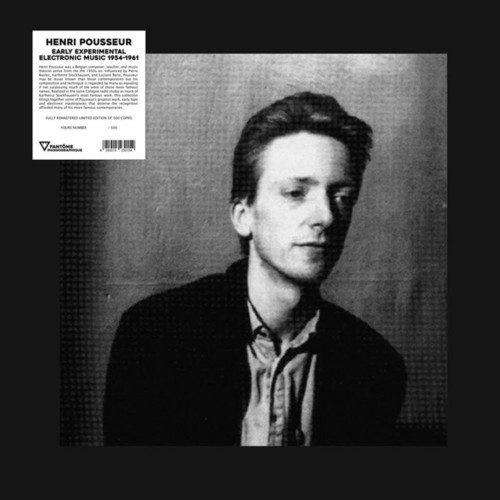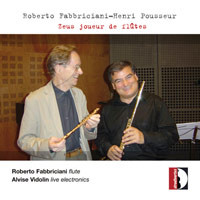Henri Pousseur
Henri Pousseur was born in Malmédy on June 23,1929. He studied at the Academies of Music in Liège and subsequently, he encountered Pierre Boulez, Karlheinz Stockhausen and Luciano Berio and devoted himself to avant-garde research. He attended the summer courses in Darmstadt, the Contemporary Music Festival in Donaueschingen and he worked at the electronic music studios in Köln and in Milano. He was a teacher of composition at the Music Academy in Basel. In 1970, he created in Liège the Centre for Musical Research of Wallonia. He was appointed as Director of the Academy of Music in Liège in 1975 and he remained in office until 1988. As the spiritual heir of Webern, Henri Pousseur endeavoured by applying the techniques and the principles of the aleatoric and through combining electronics with traditional instruments - to bring about a renewal of the phenomenon of sound. From among a vast catalogue, we could quote "Symphonie à 15 solistes" (1958), "Les Éphémérides d'Icare" (1970), "Couleurs croisées" (1967) for orchestra as well as the opera "Votre Faust" (1961-68) created in co-operation with the writer Michel Butor.
Henri Pousseur was born in Malmédy on June 23,1929. He studied at the Academies of Music in Liège and subsequently, he encountered Pierre Boulez, Karlheinz Stockhausen and Luciano Berio and devoted himself to avant-garde research. He attended the summer courses in Darmstadt, the Contemporary Music Festival in Donaueschingen and he worked at the electronic music studios in Köln and in Milano. He was a teacher of composition at the Music Academy in Basel. In 1970, he created in Liège the Centre for Musical Research of Wallonia. He was appointed as Director of the Academy of Music in Liège in 1975 and he remained in office until 1988. As the spiritual heir of Webern, Henri Pousseur endeavoured by applying the techniques and the principles of the aleatoric and through combining electronics with traditional instruments - to bring about a renewal of the phenomenon of sound. From among a vast catalogue, we could quote "Symphonie à 15 solistes" (1958), "Les Éphémérides d'Icare" (1970), "Couleurs croisées" (1967) for orchestra as well as the opera "Votre Faust" (1961-68) created in co-operation with the writer Michel Butor.
Works for Flute
"Flutist Roberto Fabbriciani continues his releases dedicated to the flute repertoire of single composers with works by Belgian composer Henri Pousseur (1929-2009). Previous releases on Mode featured Aldo Clementi and Bruno Maderna.As with Fabbriciani’s preceeding Clementi and Maderna releases, this Pousseur release marks the first time Pousseur’s works for flute have been collected in one recording. It is important to note that Fabbriciani had a long working relationship with the composer.The s…
Early Experimental Electronic Music 1954-1961
Henri Pousseur was a Belgian composer, teacher, and music theorist active from the the 1950s on. Influenced by Pierre Boulez, Karlheinz Stockhausen, and Luciano Berio, Pousseur may be lesser known than those contemporaries but his composition and technique is regarded by many as equaling if not surpassing much of the work of those more famous names. Realized in the same Cologne radio studio as much of Karlheinz Stockhausen's most famous work, this collection brings together some of Pousseur's gr…
Zeus joueur de flutes
Alvise Vidolin (live electronics), Roberto Fabbriciani (flute)
Paysages Planétaires
In 2000, Henri Pousseur was asked by Philippe Samyn, a Brussels-based architect who liked to work in collaboration with other artforms, to lend his support to the plan for the construction of a business complex by one of the most important building enterprises in the country. There were four low buildings arranged like different parts of a medieval castle-village, grouped around a kind of large open central court. Leaning on the suggested image, Pousseur immediately suggested that the fir…



